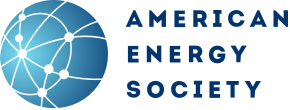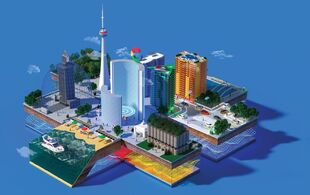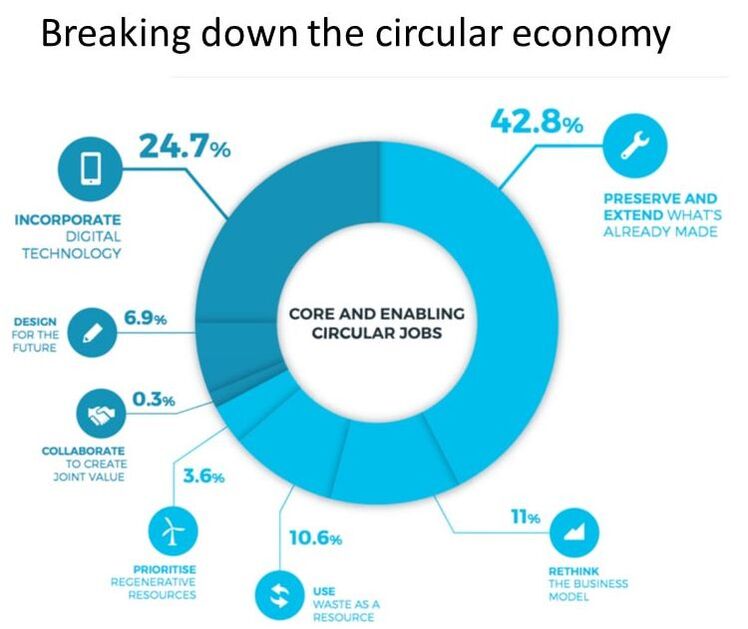|
The circular economy is celebrated as a trillion-dollar opportunity beginning to penetrate industries around the world. There's no sector or region left untouched by the potential for reinventing systems, products and services in a fashion that ultimately creates no waste and even regenerates natural systems. At least that's the hope among evangelists of circularity, notably the Ellen MacArthur Foundation alongside many hundreds of corporations aligned on various ambitious circular goals.
|
Circular concepts and business models are already taking off internationally, maybe most visibly in Europe. But even in the United States, there's no shortage of job postings that include explicitly circular terms in their descriptions. In other cases, you'll have to read between the lines when scouring other sustainability roles, which is easy enough if you wear the lens of rewriting any or all of the "take," "make" or "waste" flows of business.
Judging by the corporate momentum toward circularity, the opportunities are only going to expand. Just as jobs in solar and wind power in the emerging renewable energy landscape outpaced work in the sputtering coal industry within a mere decade, so too will a circular workforce replace outmoded roles from high-carbon, high-waste economies.
Already in the Netherlands 8 percent of all jobs are circular, according to a 2015 report by Circle Economy (PDF), an Amsterdam-based think tank that divides circular jobs into three categories. That includes "core" circular jobs, including those that involve regenerative resources, extend the life of products and rethink business models. Then there are "enabling" circular jobs, including designing for the future. And finally the "indirectly" circular jobs, in education, government and professional services, all support the more core circular functions.
Already in the Netherlands 8 percent of all jobs are circular, according to a 2015 report by Circle Economy (PDF), an Amsterdam-based think tank that divides circular jobs into three categories. That includes "core" circular jobs, including those that involve regenerative resources, extend the life of products and rethink business models. Then there are "enabling" circular jobs, including designing for the future. And finally the "indirectly" circular jobs, in education, government and professional services, all support the more core circular functions.
These five roles are helping to drive early circular economy transformations:
- Product and packaging designer: Think of all the objects you buy, unwrap, consume or otherwise handle every day. Most need to be radically reinvented in order to keep plastics out of the oceans and carbon out of the atmosphere. To help that process along, the Ellen MacArthur Foundation (EMF) together with design firm IDEO worked on a Circular Design Guide to inspire and inform the design community. It took the organizations about a year to calculate that there are about 160 million designers on the planet, EMF's Andrew Morlet said at the GreenBiz Circularity 19 event in June. By 2025 EMF and IDEO seek to reach 80 million of these designers, engaging 20 million to design products in innovative new ways. Whether you're an industrial designer, an architect, fashion designer or really anyone else who makes things, there's a calling to rewrite the industrialized, high-carbon story of stuff, in which more plastic than fish soon will populate the ocean. It's not just the stuff that counts but the packaging in which its kept, so that needs to be rethought to be continuously reused or recycled in ways that don't diminish the quality of their original ingredients. Loop's chic reusable packaging for ice cream, toothpaste and other consumables sold by the world's biggest brands, for example, is one glimpse at some possibilities.
- Circular investment specialist: High finance is starting to laser in on the unique solutions driving circularity. The Larry Fink-led BlackRock with EMF last week opened a $20 million circular economy fund of publicly traded companies, including Adidas (recycler of polyester) and Tomra (operator of reverse vending machines). Firms that are already ahead of the game and backing early-stage firms include Closed Loop Ventures in New York City and Circularity Capital out of Edinburgh, Scotland. Closed Loop Ventures-backed startups include AMP Robotics (using AI to shrink recycling costs), Loliware (making straws from seaweed) and Tradelanes (automating export processes). Investment professionals who focus on mature and emerging companies alike will need to bone up on their research and learn the vocabulary of circularity in order to select the solutions with the greatest returns.
- Customer service, beyond purchasing: Would you like to lease or buy that? Such a refrain may become common at the cash register, as more stores offer rental services for their gear alongside previously owned merchandise. Salespeople will need a new script for helping consumers choose a wider array of options, as well as additional training to understand and sell the environmental attributes of their offerings. Customer service and sales professionals should become more hip to language and sales models around circularity, as well as understanding the quality and longevity of particular brands. The fashion world is already walking the walk. The RealReal's unicorn status and popularity of resale sites such as ThredUp support projections that clothing resale will reach $51 billion in sales by 2023. Yerdle Recommerce helps big brands to run Patagonia Worn Wear, REI Used Gear and Eileen Fisher Renew white-label services for reselling pre-worn apparel. Even some mom-and-pop vintage fashion boutiques offer garment rentals, which makes sense if you see no need to wear a Summer-of-Love Pucci shirt more than once in a lifetime.
- Reverse logistics manager: Retailers are struggling to keep up with the 20 percent of goods ordered online that consumers send back, projected to cost retailers $550 billion by 2020. Scandalously, billions of pounds of those items are dumped or burned every year. That all gives new importance to the people in charge of reverse logistics, who must reduce damage both to the bottom line and the environment. The increased volume and complexity of handling returns involves high-level strategic planning. Big data and artificial intelligence will help track materials down to the molecule so they can be repurposed and removed from waste streams. And it's not just about consumer goods; corporations can save on costs by reusing, repurposing or sharing industrial machines and products. There's room for efforts to crop up as matchmakers for spent materials and willing takers, along the lines of the Austin Materials Marketplace. The reverse logistics operations probably most familiar to consumers are the recycling of bottles, cans and newspapers — and that work needs to be refined, too, in order to increase efficiency and extract more value from materials including plastics. Beyond the white collar, "recommerce"-associated work includes the inspection and classification of incoming used merchandise for resale — not just for clothing, but for other items people tend to borrow from a friend or neighbor, such as yard tools or carpet shampoo machines. That provides ground-level, hands-on work for those with a fine eye for small details.
- Product lifecycle manager: This role no longer will follow the linear path from a product's origin story, perhaps starting in a mine, to its likely demise in a landfill. Reverse logistics is part of the not-quite-end-of-life story for goods in a circular economy, but product lifecycle management takes an even broader view to closing supply chain gaps. It can involve creating new types of products and ways to make them, as well as finding new sourcing avenues and channels of distribution. The familiar job-description bullet points calling for "big picture thinking" plus "attention to detail" will be essential. For example, this recent Amazon listing for program manager of its WW Product Lifecycle Support Program involves "returns, re-commerce, and rentals," and sums up the new circular shape of lifecycle management like so:
Our work is broad and deep: we train machine learning models to automate routing and find signals to optimize re-use; we invent new channels to give products a second life; we develop world-class product support to help customers love what they buy; we pilot smarter product evaluations; we work from the customer backward to find ways to make the return experience remarkably delightful and easy; and we do it all while scrutinizing our business with laser focus. ...This will be a high visibility role that requires an individual to be a thought leader, influencer, technical expert, and visionary globally.
Ultimately, the circular economy only reaches its world-changing potential once circularity-related work becomes understated and broadly understood as business as usual. The circular niche will become the mainstream, and nobody will feel the need to spell it out as part of a job function. However, that hasn't even happened yet with roles explicitly related to sustainablity, which leaves plenty of opportunities to get to work.
This adapted article has been republished with permission from GreenBiz Webcast, originally titled: 5 emerging jobs in the circular economy.
Ultimately, the circular economy only reaches its world-changing potential once circularity-related work becomes understated and broadly understood as business as usual. The circular niche will become the mainstream, and nobody will feel the need to spell it out as part of a job function. However, that hasn't even happened yet with roles explicitly related to sustainablity, which leaves plenty of opportunities to get to work.
This adapted article has been republished with permission from GreenBiz Webcast, originally titled: 5 emerging jobs in the circular economy.




